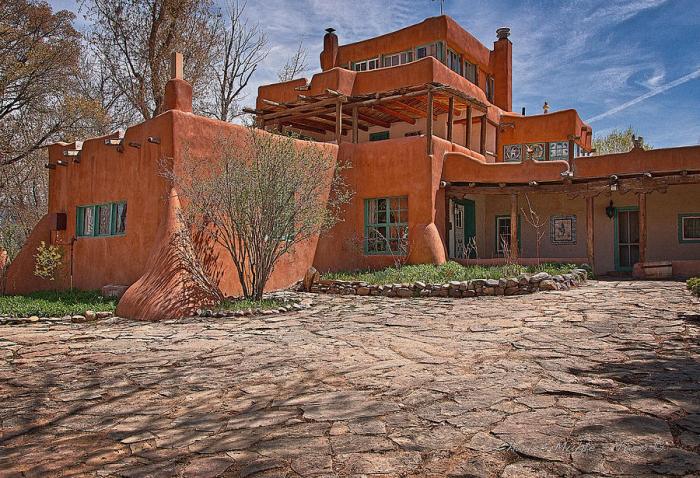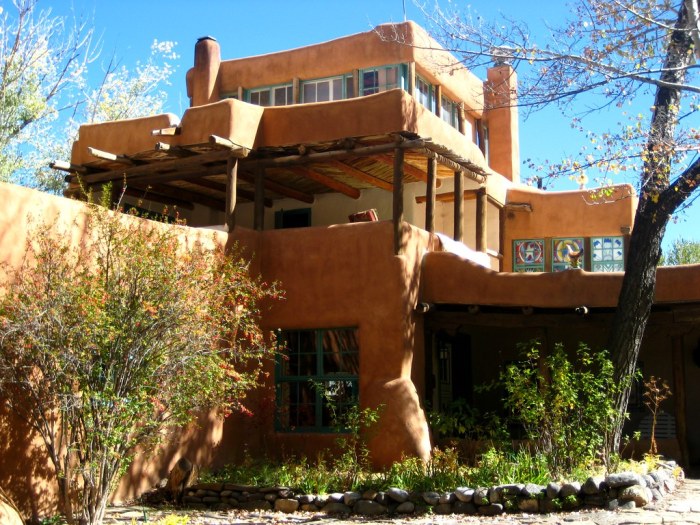Tony’s room mabel dodge luhan house – At the heart of Mabel Dodge Luhan’s home in Taos, New Mexico, Tony’s Room emerged as an extraordinary gathering place for the early 20th century’s most brilliant minds. This vibrant space fostered artistic and intellectual exchange, leaving an indelible mark on the literary and cultural landscape of its time.
Within these walls, Mabel Dodge Luhan, a renowned patron of the arts, orchestrated lively discussions that ignited creative sparks and shaped the works of literary giants such as D.H. Lawrence and Willa Cather. Tony’s Room became a crucible for ideas, where modernism and other cultural movements took root.
Tony’s Room Historical Context

Mabel Dodge Luhan’s home in Taos, New Mexico, was a renowned gathering place for intellectuals and artists in the early 20th century. Tony’s Room, a small, intimate space within the house, played a significant role in this creative milieu, becoming particularly associated with the controversial writer D.H.
Lawrence.
Tony’s Room and D.H. Lawrence, Tony’s room mabel dodge luhan house
Tony’s Room was named after Mabel Dodge Luhan’s first husband, Tony Luhan, a Native American man from Taos Pueblo. The room became a private sanctuary for D.H. Lawrence and his wife, Frieda, during their stay at the house in 1922-1923.
Lawrence, known for his explicit and often scandalous writing, found solace and inspiration in Tony’s Room, where he wrote some of his most famous works, including “St. Mawr” and “The Plumed Serpent.”
Artistic and Intellectual Atmosphere
Tony’s Room was a hub for lively artistic and intellectual discussions. Mabel Dodge Luhan, an ardent patron of the arts, fostered a welcoming and stimulating environment that attracted a diverse group of thinkers and creators. Among the frequent visitors were painters Marsden Hartley and Georgia O’Keeffe, writer Willa Cather, and philosopher John Collier.
These individuals engaged in wide-ranging conversations that encompassed literature, art, philosophy, and social issues. Mabel Dodge Luhan’s own eccentric personality and provocative ideas added to the dynamic atmosphere of the room.
Literary Significance

Tony’s Room played a pivotal role in the development of early 20th-century literature. D.H. Lawrence’s works, written in the room, had a profound impact on the literary landscape. His exploration of sexuality, mysticism, and the human condition challenged conventional norms and inspired a new generation of writers.
Other authors who frequented the room, such as Willa Cather and John Collier, were also influenced by the conversations and ideas that emerged from these gatherings. Tony’s Room became a breeding ground for literary innovation and experimentation.
Cultural Impact
Tony’s Room extended its influence beyond the realm of literature and art. The ideas and conversations that took place within its walls contributed to the broader cultural climate of the time. The room became a catalyst for discussions on social justice, gender equality, and the search for a more authentic and fulfilling way of life.
These ideas permeated into the wider artistic and intellectual circles of the period, influencing the development of modernism and other cultural movements.
Physical Description: Tony’s Room Mabel Dodge Luhan House
Tony’s Room was a small, intimate space located on the second floor of Mabel Dodge Luhan’s house. It measured approximately 10 feet by 12 feet and featured a low ceiling and a large, north-facing window that provided ample natural light.
The room was furnished with simple, rustic furniture, including a writing desk, a few chairs, and a bookcase. The walls were adorned with Native American art and textiles, reflecting Mabel Dodge Luhan’s interest in the indigenous culture of the region.
Tony Luhan’s Influence

Tony Luhan, Mabel Dodge Luhan’s first husband, played a significant role in the creation and significance of Tony’s Room. As a Native American from Taos Pueblo, Tony brought a unique perspective and cultural understanding to the intellectual discussions that took place in the room.
His knowledge of the local history, traditions, and spirituality enriched the conversations and contributed to a deeper understanding of the human experience.
Legacy and Preservation
Tony’s Room has been preserved as a historical and cultural landmark. In 1974, it was declared a National Historic Landmark, recognizing its significance as a place where important intellectual and artistic movements took place.
Today, the room is open to the public as part of the Mabel Dodge Luhan House Museum. Visitors can experience the intimate atmosphere of the space and learn about its rich history and legacy.
Q&A
What was the significance of Tony’s Room?
Tony’s Room was a gathering place for intellectuals and artists, fostering artistic and intellectual exchange that shaped the literary and cultural landscape of the early 20th century.
Who was Mabel Dodge Luhan?
Mabel Dodge Luhan was a renowned patron of the arts who hosted gatherings in Tony’s Room, influencing the creative output of prominent authors such as D.H. Lawrence and Willa Cather.
What literary works were influenced by discussions in Tony’s Room?
Tony’s Room played a role in the conception or influence of literary works such as D.H. Lawrence’s “Women in Love” and Willa Cather’s “Death Comes for the Archbishop.”
What was the cultural impact of Tony’s Room?
Tony’s Room was a catalyst for the development of modernism and other cultural movements, shaping the artistic and intellectual climate of the time.